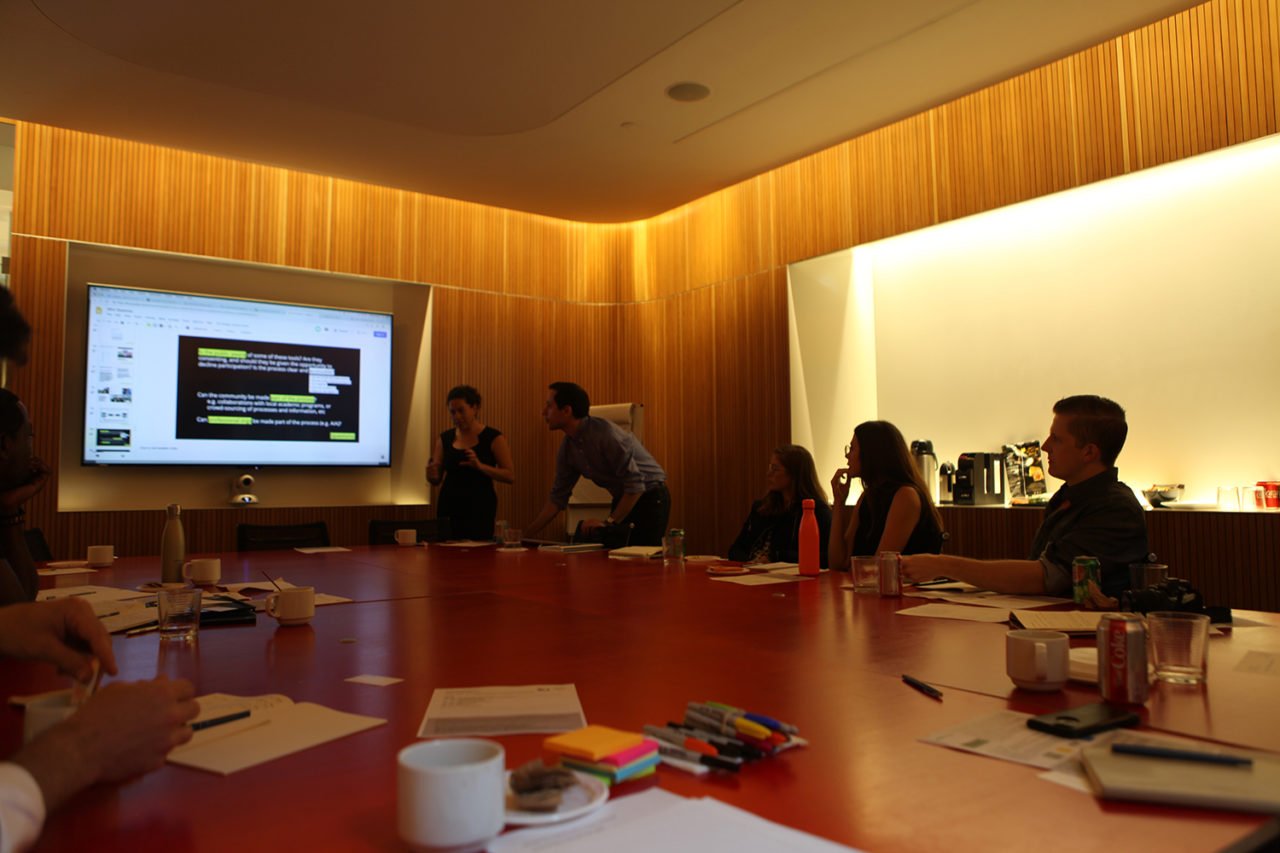by: Fahir Burak Unel, Assoc. AIA, LEED AP BD+C; Delma Palma, AIA
On Friday, July 12, the AIANY Civic Leadership Program class of 2019 held their first development session of the year, where they explored how architects can engage with the technical and policy spheres and dissected how emerging technologies impact the design of our cities, our buildings, and our communities.
Led by CLP members Fahir Burak Unel, Assoc. AIA, LEED AP BD+C, and Delma Palma, AIA, the group focused on four aspects of civic data: its definition and forms (re: qualitative vs quantitative), its pursuit (re: collection and analysis), its handling (re: tools and processes of production), and its stewardship (re: accountability, trust, and the public).
Below, Unel and Palma discuss some of the most provocative questions raised at their session.
—-
Increasingly, there is a proliferation of technology-driven products that permeate the way we quantify, talk about, and design our built environment. From smart city technologies like web-enabled sensors and automation to enhancements around traditional methods like mapping and analytics, these developments bring with them a mix of promise and implications for the future of not just architecture and urbanism, but also of society, governance, and civics.
At the same time, there is an accompanying increase in the organizations that participate in the development, execution, and administration of these products. Universities and think tanks compete with lab collectives, private companies, and government taskforces to contribute to the discourse around the emerging ideas that will impact our present and future. These parties can—and often do—have competing and sometimes complementary interests, requiring us, architects, to remain actively engaged, not only as listeners but as vigilant participants, in order to effectively fulfill our evolving duties as professionals and citizens.
At their heart, all these emerging tools and the groups that pursue them are centered around the collection, sharing, manipulation, assessment, and execution of civic data—that is, information that is created and provided by the public, and which, in its ideal form, should be utilized in service thereof.
As the Governance Lab at NYU and fellows of the European Commission’s ENGAGE FP7 Infrastructure Project put it, civic data is, and should be, of the people, by the people, and for the people, utilized toward doing together what we cannot do alone.
It is, therefore, incumbent on us, as designers practicing in this evolving landscape, and as professionals tasked with protecting the safety and welfare of the public and its spaces, to ask certain fundamental questions around this subject: How do we utilize these tools effectively to inform our design process, not just as another piece of our toolkit, but as a re-thinking of our services and duties to the public? How can we use these tools to improve the experience of the spaces and cities we design, or to enhance their resilience, not just environmentally, but economically, socially, and culturally? How do digital tools that are developed for the design and management of smart spaces serve the general public and its welfare, especially of the most vulnerable? How can we ensure that the metrics we are using are informed by users and are therefore actually informing user-based design?
Further, in an age of increasingly collaborative design thinking, where spaces are built not just for, but with the end-users in mind, how do we advocate for the occupants as well as the owners to ensure that the public has a say in how these tools are developed, programmed, and implemented? How do we break out of traditional modes of operating, and involve a more diverse group of stakeholders in order to eliminate blind spots, avoid biases both existing and new, and avert siloism and elitism to introduce genuine accountability and dialogue?
In other words, how do futurism and humanism come together to serve the public, improve civic engagement, fuel equitable development, and enhance our quality of life?
The answers to these questions will only emerge from architects directly engaging with them—by venturing into the unknown, by making themselves vulnerable to the public as well as their peers in other professions, and by fundamentally reconsidering their involvement in design praxis through the way they utilize civic data. Only then will there emerge a practicable set of guidelines toward a more responsive model of the profession based on practices that are collaborative, inclusive, open, transparent, accountable, holistic, community-driven, and resilient.
We will continue to explore these subjects throughout our involvement with the AIANY 2019 Civic Leadership Program, toward not only educating our peers on the landscape of emerging design technologies, but also toward helping influence discourse around best practices for architects in the management of technology and data for the benefit of the public.








